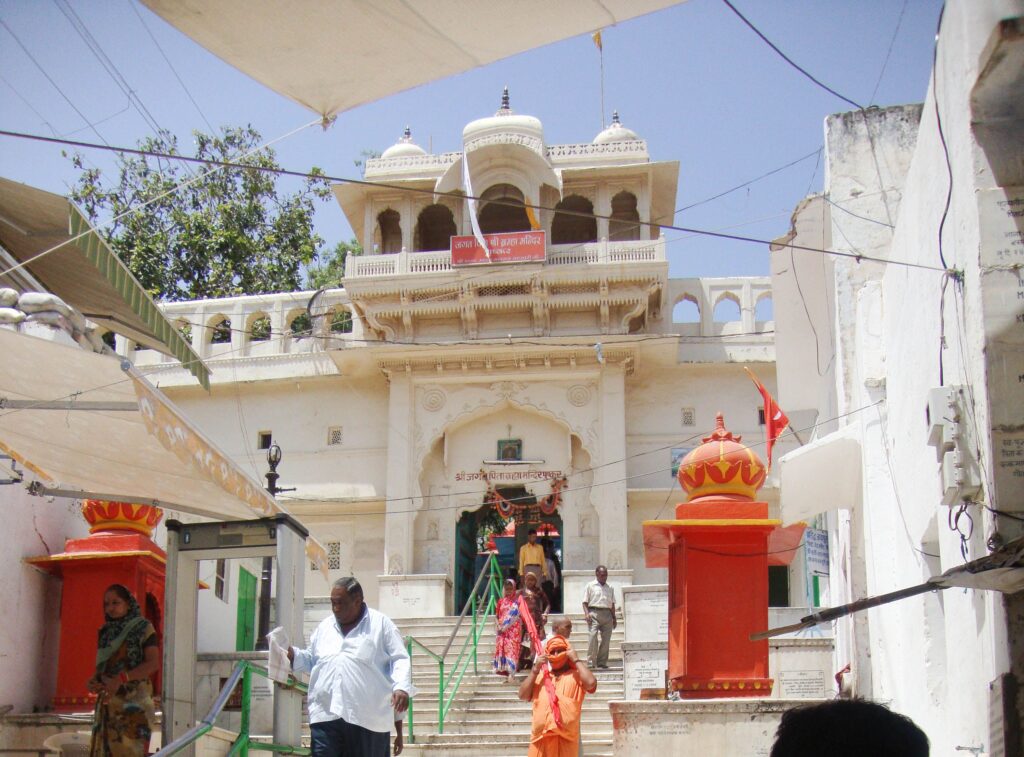Nestled in the sacred town of Pushkar, Rajasthan, the Brahma Temple stands as a timeless testament to devotion and architectural splendor. Dedicated to Lord Brahma, the creator of the universe in Hindu mythology, this temple is one of the very few in the world dedicated to this deity. Its rich history, spiritual significance, and stunning location make it a must-visit for travelers and devotees alike.
A Glimpse into History
The Brahma Temple, believed to be over 2,000 years old, holds a significant place in India’s spiritual and cultural heritage. It is said to have been built by Sage Vishwamitra and later renovated in the 14th century by the Mughal Emperor Akbar. Its location, near the serene Pushkar Lake, adds to its divine aura, as the lake itself is considered sacred in Hinduism.
Architectural Marvel
The temple is a striking example of Rajasthani temple architecture. Constructed with marble and stone, it features a red shikhara (spire) that dominates the skyline of Pushkar. The intricately carved silver doors and the idol of Lord Brahma seated on a lotus pedestal are the main highlights. The lotus symbolizes purity and connection with creation, making it a fitting emblem for Brahma’s temple.
Spiritual Significance
As per Hindu mythology, Lord Brahma performed a yagna (ritual sacrifice) at Pushkar Lake, making the place sacred. Devotees believe that visiting the temple and offering prayers here can cleanse their soul and bring blessings for prosperity and well-being.
The temple is especially vibrant during Kartik Purnima, the full moon night in the Hindu month of Kartik (October-November), when the annual Pushkar Camel Fair takes place. Devotees flock to the temple to participate in rituals and seek blessings during this auspicious time.
What Makes the Brahma Temple Unique
- Rarity of Brahma Temples: It’s one of the very few temples dedicated to Lord Brahma, making it a significant spiritual destination for Hindus.
- Sacred Pushkar Lake: The temple’s proximity to the lake, where pilgrims take holy dips, enhances its religious importance.
- Cultural Hub: The temple is surrounded by vibrant markets and streets that showcase the colorful culture and traditions of Rajasthan.
Visitor Information
- Timings: The temple is open daily from early morning till evening, with a break during midday.
- Attire: Modest clothing is recommended as it is a place of worship.
- Photography: Photography inside the temple is restricted, but you can capture the stunning views of Pushkar Lake and the surroundings.

